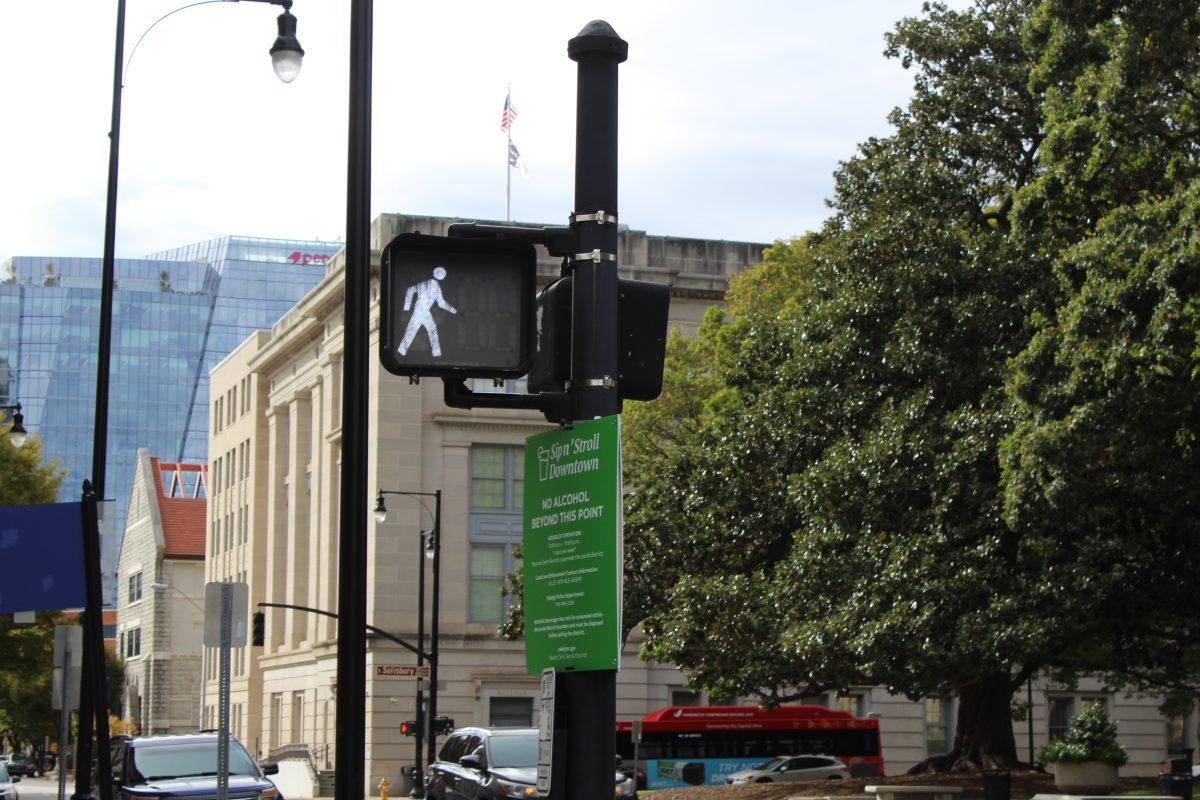Downtown Raleigh’s traffic laws are changing, but do they truly address the needs of frequent pedestrians?
The Raleigh City Council voted on Sept. 20 to approve parts of the Downtown Pedestrian Safety Project, reducing the speed limit from 35 to 25 mph and removing seven double-turn lanes. The council will likely disallow turning right on red lights in the coming weeks.
Simon Griggs, a fourth-year studying computer science, is the president of NC State’s Cross Country Club. Griggs said the club runs downtown one to three times a week.
“From a pedestrian’s perspective, I don’t really care about the speed limit,” Griggs said. “I don’t want it to be 105 miles an hour, but 25 or 35 [is] not going to make a hill of beans. But the no-right [turn] on red is very nice.”
Griggs said drivers often fail to notice pedestrians who are trying to cross the street as they are about to make right turns on red.
“They never come back and look back at the direction that I’m coming from,” Griggs said. “And I know I’ve tapped a bunch of car hoods as they’ve nearly hit me and I know a lot of my friends have.”
Griggs said removing double-turn lanes will contribute to overall visibility downtown.
“If the car [is] going to be yielding to pedestrians, double-turn lanes can make it hard to see because there can be something between you and the pedestrians,” Griggs said. “I know that [is] the thing that I look out for when I’m running and just having in the back of my mind that everybody can see me.”
Griggs said risk has always been involved with running downtown, but it does not have to be that way.
“We’ve had two close calls this school year of people nearly getting hit,” Griggs said. “I’d like to let 40 people go run downtown in a handful of groups and not have in the back of my mind someone may get hit by a car, but that is the way it’s always been, but there’s no necessary reason in my mind that it has to be like that.”
Alec Perrin, a fourth-year studying analytics, is a club officer of NC State’s Cycling Club. Perrin frequently bikes through downtown to run errands and meet with cycling groups.
Perrin said the main advantage of the speed limit reduction for cyclists is that they should have a greater chance to safely catch the green wave, which is when traffic lights are coordinated for drivers riding at a certain speed to keep traffic flowing. Perrin said cyclists are currently unable to keep up with the green wave at 35 mph.
“Lowered to 25 [mph], I can kick into gear and catch more of a green wave of going through downtown, which would improve my riding experience,” Perrin said.
Perrin said removing right turns at stop lights would cause more inconvenience than benefit for cyclists, as frequent stops can take a toll during long-distance rides.
“[Right turns on red are] something I enjoy as I bike,” Perrin said. “I like being able to roll a corner and not have to unclip or put a foot down.”
Perrin said a more useful employment of Raleigh’s resources that would benefit cyclists would be to maintain cycling lanes.
“The road surface in the bike lane is often full of gravel and glass and all sorts of stuff that I do not want to ride through that will give me a flat tire if I have to ride through it,” Perrin said. “So if it’s not too busy, I literally will choose not to use the bike lanes and act like a car.”
Despite their differing opinions on the new traffic legislation, both agree improving visibility should be a priority of the city.
Griggs said streetside parking greatly limits the visibility of drivers and pedestrians alike.
“From a purely pedestrian perspective, it makes it hard for cars to see me and it makes it hard for me to see the cars, which is the key step in helping all of us negotiate this safely,” Griggs said.
Perrin said poor visibility downtown requires cyclists to be proactive.
“Whether that’s trees on corners [or] some of the corners downtown, it’s hard to see around, or they have parking, like parallel parking, right up to the corner,” Perrin said. “Most of the time as a cyclist, your head is at the same height as [the] vehicle. So it’s down to cyclists.”
Perrin said a perfectly safe downtown would be void of cars.
“Having a walkable downtown removes the need for cars,” Perrin said. “It’s hard to drastically improve the safety for any group that isn’t a driver without drastically shifting the infrastructure to being focused on pedestrian-only or a specific other mode of transportation other than the car-centric American infrastructure that we have.”
Griggs said it is important to remember the danger that exists in car-dominated areas, like downtown.
“Just for everybody that’s out walking, running [and] biking, cars are big and hard and we are small and soft,” Griggs said. “We just have to remember that the car wins according to physics.”













